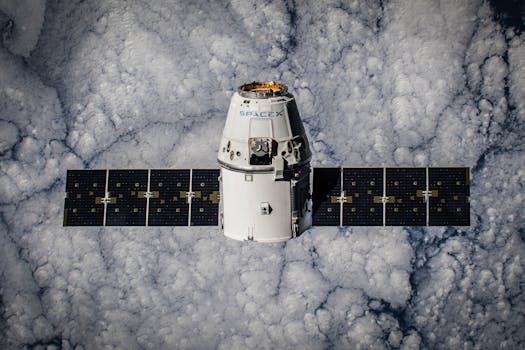MEO Satellites: Revolutionizing Global Communication with Medium Earth Orbit Technology – MEO satellites

MEO satellites, or Medium Earth Orbit satellites, are a type of satellite that operates in an orbit between 2,000 and 36,000 kilometers above the Earth’s surface. MEO satellites are revolutionizing global communication by providing faster and more reliable connections than traditional geostationary satellites.
The key benefit of MEO satellites is their ability to offer lower latency and higher throughput than geostationary satellites. This is because MEO satellites are closer to the Earth, which reduces the time it takes for signals to travel between the satellite and the ground. As a result, MEO satellites are ideal for applications that require real-time communication, such as video conferencing, online gaming, and remote healthcare.
MEO satellites are also more resistant to interference and signal degradation than geostationary satellites. This is because MEO satellites operate at a higher frequency, which makes them less susceptible to interference from other satellites and terrestrial sources. Additionally, MEO satellites can provide more precise location and timing information, making them useful for applications such as navigation and precision agriculture.
One of the most significant advantages of MEO satellites is their ability to provide global coverage with a smaller number of satellites. This is because MEO satellites can see a larger portion of the Earth’s surface than geostationary satellites, which allows them to cover more area with fewer satellites. As a result, MEO satellites can provide more cost-effective and efficient global communication solutions.
Several companies are currently developing and launching MEO satellite constellations, including O3b Networks, Intelsat, and Boeing. These constellations will provide a range of services, including broadband internet, mobile connectivity, and IoT connectivity. The development of MEO satellite constellations is expected to have a significant impact on the future of satellite communication, enabling faster, more reliable, and more cost-effective global connectivity.
In addition to their technical benefits, MEO satellites also have the potential to bridge the digital divide and provide connectivity to underserved communities. By providing global coverage and faster speeds, MEO satellites can enable access to essential services such as education, healthcare, and financial inclusion. As the demand for global connectivity continues to grow, MEO satellites are likely to play an increasingly important role in meeting this demand and providing critical communication infrastructure.
Despite the many benefits of MEO satellites, there are also several challenges associated with their development and deployment. One of the main challenges is the complexity and cost of launching and operating a large constellation of satellites. Additionally, MEO satellites require sophisticated ground infrastructure and network management systems to ensure seamless and reliable communication.
Another challenge facing MEO satellites is the issue of regulatory frameworks and spectrum allocation. The use of MEO satellites requires coordination and cooperation between governments, regulatory agencies, and industry stakeholders to ensure that spectrum is allocated efficiently and effectively. As the number of MEO satellites increases, there is a growing need for international cooperation and harmonization of regulatory frameworks to ensure that the benefits of MEO satellites are realized.
In conclusion, MEO satellites are transforming the way we communicate globally, offering faster and more reliable connections than traditional geostationary satellites. With their lower latency, higher throughput, and global coverage, MEO satellites are ideal for a range of applications, from video conferencing and online gaming to remote healthcare and precision agriculture. As the development and deployment of MEO satellite constellations continue to advance, we can expect to see significant improvements in global connectivity and communication infrastructure.
The future of MEO satellites looks bright, with many opportunities for growth and innovation. As the demand for global connectivity continues to grow, MEO satellites are likely to play an increasingly important role in meeting this demand and providing critical communication infrastructure. Whether you are a consumer, business, or government agency, MEO satellites have the potential to revolutionize the way you communicate and access essential services.




